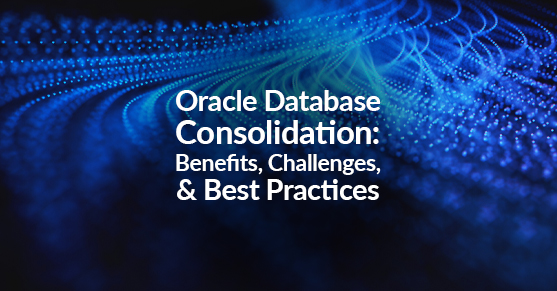As organizations grow and evolve, their IT infrastructures can become increasingly complex. One area where this complexity can manifest itself is in the management of multiple Oracle databases. In response to this challenge, many organizations are considering consolidating their Oracle databases into a single instance. This blog will explore the benefits and challenges of Oracle database consolidation and provide some best practices for successfully undertaking this process.
Benefits of Oracle Database Consolidation
- Reducing Hardware Costs: Consolidating multiple Oracle databases into a single instance can result in significant cost savings. By reducing the number of servers and storage devices required to manage multiple databases, organizations can lower their hardware costs, as well as the associated expenses related to power consumption, cooling, and maintenance.
- Simplifying Management: A single Oracle database instance is easier to manage than multiple instances. With fewer databases to monitor and maintain, database administrators (DBAs) can spend less time on routine tasks such as backups, updates, and performance tuning, freeing them up to focus on more strategic initiatives.
- Improved Performance: In some cases, consolidating multiple Oracle databases into a single instance can result in improved performance. For example, by reducing the number of data center network bottlenecks and latency, a consolidated database can potentially deliver faster response times and higher levels of availability.
Challenges of Oracle Database Consolidation
- Compatibility Issues: One of the main challenges of consolidating Oracle databases is ensuring compatibility between the various databases being merged. This can involve addressing differences in database schema, data types, and stored procedures, as well as dealing with any custom code or applications that may be affected by the consolidation.
- Data Migration and Integration: Migrating data from multiple Oracle databases into a single instance can be a complex and time-consuming process. Ensuring data integrity and minimizing downtime during the migration process is critical, and organizations must carefully plan and execute the migration to avoid any disruptions to their operations.
- Licensing and Compliance: Consolidating Oracle databases can have implications for licensing and compliance. Organizations must ensure that they are adhering to the terms of their Oracle licenses and that they have the appropriate number of licenses for their consolidated environment.
Best Practices for Oracle Database Consolidation
- Analyze and Plan: Before embarking on a database consolidation project, organizations should thoroughly analyze their existing Oracle databases to determine which instances can be consolidated and identify any potential compatibility issues. This analysis should also include an assessment of the hardware and storage requirements for the consolidated environment.
- Develop a Phased Approach: A phased approach to database consolidation can help minimize disruption and reduce the risks associated with the process. By consolidating databases in smaller groups or stages, organizations can more easily manage the migration process and address any issues that arise.
- Test and Validate: Before deploying the consolidated database into production, it is essential to thoroughly test and validate the new environment. This includes conducting performance tests, verifying data integrity, and ensuring that all applications and custom code are functioning correctly.
- Monitor and Optimize: After the consolidated database has been deployed, ongoing monitoring and optimization are crucial to ensure optimal performance and stability. This includes tracking key performance metrics, identifying and addressing any performance bottlenecks, and regularly reviewing and optimizing database configurations.
Conclusion
Oracle database consolidation can provide significant benefits for organizations, including reduced hardware costs, simplified management, and improved performance. However, it also presents several challenges that must be carefully considered and addressed. By following best practices and developing a well-planned and executed consolidation strategy, organizations can successfully consolidate their Oracle databases and realize the full potential of this powerful technology.
If you have any questions or would like to learn more, please contact us!

